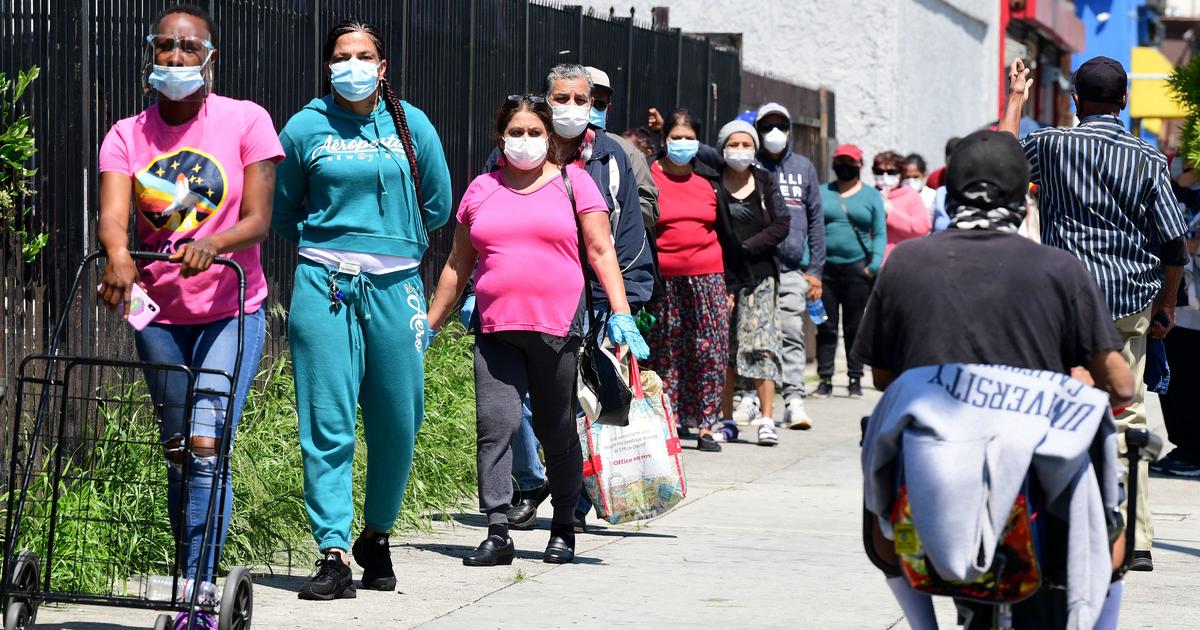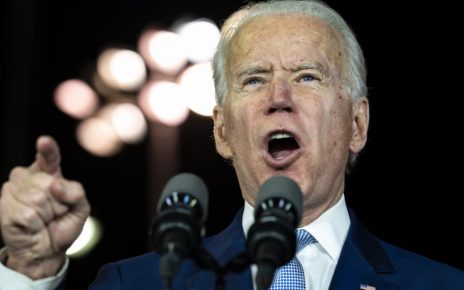Trump administration still wants to cut food stamps
The U.S. Department of Agriculture on Tuesday said it is appealing a court ruling that blocked the Trump administration from imposing additional work requirements to qualify for the Supplemental Nutrition Assistance Program on poor adults without children, according to court documents. The Trump administration has sought to cut the food stamp program, with USDA Secretary Sonny Perdue arguing last year that the program was meant to provide “assistance through difficult times, not a way of life.”
The latest effort to curtail the program centers on new regulations that were set to take effect on April 1. But in March, a judge blocked the rule, calling it “likely unlawful” and noting that food benefits are critical given that “a global pandemic poses widespread health risks.”
That decision allowed 700,000 adults to keep their food stamp benefits — a number expected to grow amid the economic devastation caused by the coronavirus pandemic.
The USDA rule focuses on so-called “able-bodied adults without dependents,” or adults who are 18- to 49-years-old and who don’t have disabilities or dependents, such as children or adult family members with disabilities. Unless they have a job or are enrolled in worker training programs, these adults are limited to three months of food stamps within a three-year period.
In a statement to CBS MoneyWatch regarding its legal appeal, a USDA spokesperson said the agency believes the rule “is the right approach.”
“While we’re currently in a very challenging environment, we do not expect this to last forever,” the USDA said. “When America goes back to work, we must be ready to engage our able-bodied SNAP participants so they may achieve meaningful and lasting employment too.”
Although every state except Delaware has at times sought a waiver to that policy, the rule would make it harder to receive one. Critics warned last year that the change could deprive 700,000 unemployed adults of nutritional aid. That estimate, from the Urban Institute, was made in November, before the pandemic crippled the U.S. economy, so the rule could knock even more Americans off of SNAP’s rolls.
In the statement, Perdue said the “USDA is maximizing our services and flexibilities to ensure children and others who need food can get it during this coronavirus epidemic.”
To be sure, the USDA has made some changes that make it easier to use food stamps since the virus outbreak, such as allowing residents in some states to use their SNAP benefits for online purchases. But experts say much more needs to be done, and that pursuing efforts to curtail food stamp access could hurt thousands of struggling Americans.
“Cruel pursuit”
With the nation’s unemployment rate soaring to nearly 15%, the highest rate since the 1930s, some lawmakers are protesting the Trump administration’s efforts to reduce access to food stamps.
“The administration has decided that now — amid the most pervasive need in a century — is a great time to crack down on Americans who rely on food stamps to keep their families from going hungry,” Rep. Marcia Fudge of Ohio said in a statement criticizing the USDA’s appeal of the court ruling, calling it a “cruel pursuit of unrealistic policy.”
Demand for food stamps is likely to surge this year, exceeding even the post-Great Recession high of about 48 million recipients in 2013, said Sara Bleich, professor of public health policy at the Harvard Chan School of Public Health. Since that high, food stamp enrollment has declined annually, dropping to about 36 million people in 2019, according to USDA figures.
That’s because SNAP usage typically moves in tandem with the economy, with enrollment rising when the jobless rate jumps and receding when the labor market rebounds. As the economy improved following the recession, more Americans found jobs and moved off food stamps. But that’s likely due for a major reversal given the pandemic’s massive economic hit.
“There are tens of millions of people who can’t afford food right now because they don’t have money,” Bleich said. “The types of people who will apply are going to look like the average American — so many more people will be on the rolls.”
Although the USDA’s latest enrollment data is from January — before the coronavirus spread across the U.S. — some states are already reporting surges in demand for food stamps. In Maryland, for example, about 70,000 residents applied for food stamps in April, double the typical enrollment, according to The Baltimore Sun.
Food aid: An economic boost
Despite the Trump administration’s efforts to rein in the food stamp program, Congress recently has expanded benefits through several measures in its stimulus bills. For instance, the Coronavirus Aid, Relief and Economic Security Act included nearly $16 billion in additional funding for SNAP.
But policy experts say more is needed as the fallout from the pandemic continues. Experts with the Robert Wood Johnson Foundation say the typical benefit should be expanded by 15% until the crisis abates. The time limit for able-bodied adults without dependents should also be waived until the downturn eases, they recommend.
SNAP should also become more flexible, experts say. For instance, food stamps generally can’t be used to buy prepared foods, like restaurant meals, or for online grocery orders — troublesome restrictions as Americans are told to maintain social distance and avoid unnecessary contact with others.
“We are seeing ‘stay at home as much as you can’ recommendations, and even ‘get your food delivered’,” noted Giridhar Mallya, senior policy officer at the Robert Wood Johnson Foundation. “Federally and in states, they should be looking at multiple types of flexibility” for purchasing groceries with food stamps.
There’s another benefit to providing more flexibility and bigger SNAP benefits: an economic boost. Enhancing benefits after the last recession lifted food spending, helping local retailers and grocers, Mallya said. A $1 billion increase in SNAP spending results in a boost to gross domestic product of $1.5 billion and helps support more than 13,000 jobs, according to a July study from the USDA.
“We believe a 15% across-the-board boost to SNAP would do several things,” Mallya said. “It would boost food security, help stimulate the economy because it increases purchasing of food and all the multiplier effects because of that, and likely increase health outcomes for kids.”
—With reporting by Rachel Layne
Source: Trump administration still wants to cut food stamps – CBS News





